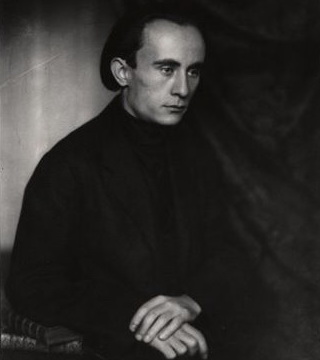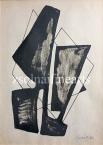Kassák, Lajos (1887-1967)

Lajos Kassák was born in the small village of Ersekujvár, Hungary, on 21 March 1887. After only a few years at school, he served an apprenticeship as a locksmith. Lajos Kassák then became a metal worker in Györ and Budapest.
At the age of twenty, Kassák began to teach himself painting and to write poetry. In 1915 he founded the revolutionary periodical "A Tett" ["The Deed"], around which he collected young artists and writers who were against the war. After "A Tett" was proscribed, Lajos Kassák founded and edited the avant-garde Activist journal "MA" ["Today"] in 1916. In it he published work by Grosz, Schwitters and Hans Richter until 1921. After the failure of the Hungarian Communist Republic, Lajos Kassák emigrated in 1920 to Vienna, where he continued to publish "MA".
Although Kassák's early work was strongly influenced by Dada, he became a Constructivist since he was now inspired by László Moholy-Nagy, who later taught at the "Bauhaus". It was in "MA" that Lajos Kassák formulated the theoretical agenda of Hungarian Constructivism in 1921. In November 1924 Kassák joined many well-known sculptors and painters of his day, including Brancusi, Arp and Schwitters, in showing work at the "First International Exhibition of Modern Art" in Bucharest. In 1926 Kassák met Le Corbusier, Amedée Ozenfant, Goll and Dermée in Paris. In November that same year he returned from exile to Budapest. Lajos Kassák was devastated by the National Socialist take-over in Germany and the puppet regime in Hungary. After Hungary was freed of the NS yoke, Kassák was active in the Hungarian Arts Council and as an editor but by the mid-1950s was forced from public office although his international reputation remained untarnished.
Exhibitions were devoted to the work of this versatile and prolific painter, sculptor, printmaker and collagist in Paris, Munich, Warsaw, Cologne and Paris.
In 1966 Kassák participated in the large-scale Dada exhibition mounted by the Zurich Kunsthalle and the Musée d'Art Moderne in Paris. In 1967, the year he died, Lajos Kassák was honoured by a retrospective at the Adolf Fényes Gallery in Budapest.

